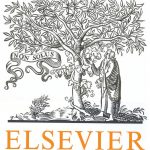
ترجمه مقاله نقش ضروری ارتباطات 6G با چشم انداز صنعت 4.0
- مبلغ: ۸۶,۰۰۰ تومان

ترجمه مقاله پایداری توسعه شهری، تعدیل ساختار صنعتی و کارایی کاربری زمین
- مبلغ: ۹۱,۰۰۰ تومان
Abstract
Environmental sustainability information in the manufacturing industry is not easily shared between stages in the product lifecycle. In particular, reliable manufacturing-related information for assessing the sustainability of a product is often unavailable at the design stage. Instead, designers rely on aggregated, often outdated information or make decisions by analogy (e.g., a similar manufacturing process for a similar product yielded X and Y results). However, smart manufacturing and the Internet of Things have potential to bridge the gap between design and manufacturing through data and knowledge sharing. This paper analyzes environmental sustainability assessment methods to enable more accurate decisions earlier in design. The techniques and methods are categorized based on the stage they apply to in the product lifecycle, as described by the Systems Integration of Manufacturing Applications (SIMA) reference architecture. Furthermore, opportunities for aligning standard data representation to promote sustainability assessment during design are identified.
5. CONCLUSION & FUTURE WORK
This paper discusses sustainability techniques and methods for evaluating sustainability at different lifecycle stages. The purpose of this research is to identify opportunities where information from downstream stages can help designers conduct more accurate environmental assessments of a product. This enables a more holistic view of the product and can lead to lessened environmental impact. Future work will expand the literature review and perform meta analysis to further discover gaps in the research literature.
In categorizing sustainability techniques, many gaps and barriers impede linking of data from downstream stages to the design stage. Here five fundamental needs of achieving that vision are identified.
1. The most significant challenge relates to sharing information across the product lifecycle. Currently, standards relating to geometry of a part (e.g., ISO 10303) are not integrated with LCA standards (e.g., ISO 14000) and are not integrated with standards for assessing sustainability of manufacturing facilities (e.g., ASTM E3012-16, ASTM E2986-15, ISO 20140). Furthermore, data formats from these standards, such as STEP and ASTM E3012-16, are not compatible with de facto standards for LCA tools (e.g., ecoSpold) due to their differing scopes. Without an integration of these standard formats, it is difficult to create a tool for designers that can accurately assess the environmental impact of manufacturing. Future work will address integration across the standard formats.